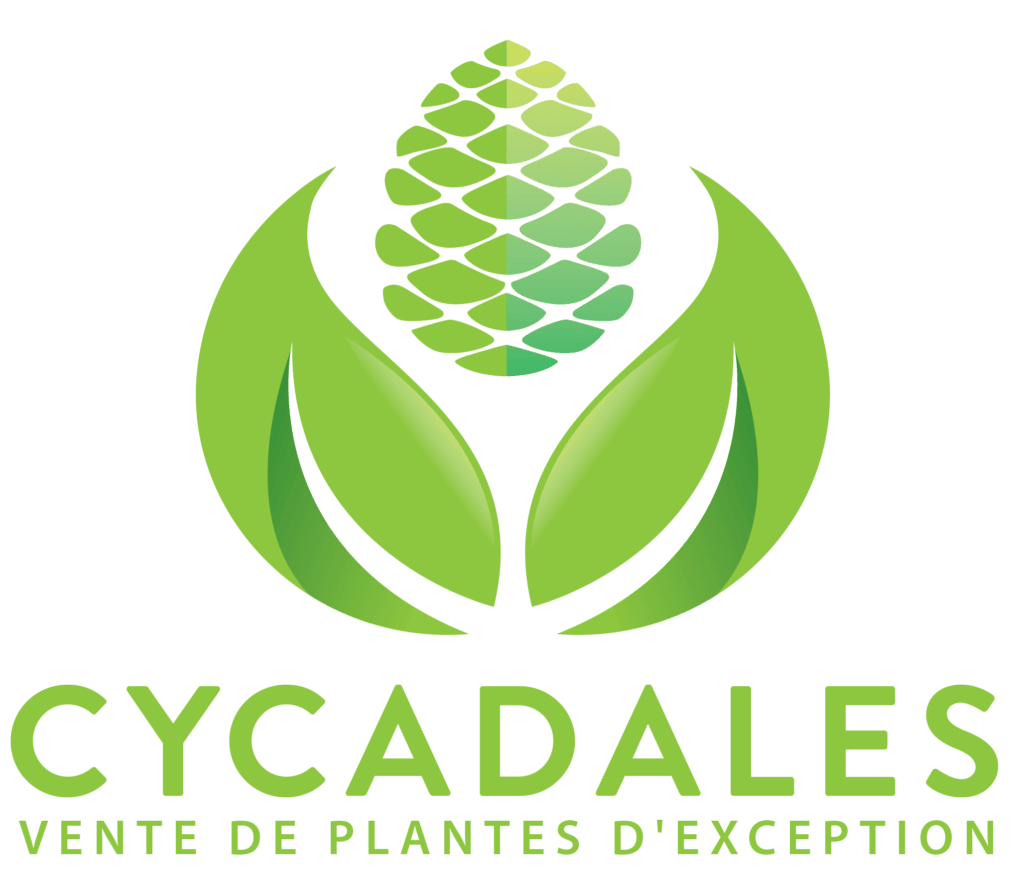A bit of data on the basis of Australian Cycas cultivation under the European climates
Written by Simon Lavaud
(Download the PDF version by clicking on the logo below)
Every cycad grower dreams of having a well grown specimen of blue Cycas like cairnsiana, couttsiana or cupida, seduced by these azure leaves that easily equal the beauty of South African Encephalartos. However, the cultivation of these species is considered tricky for reasons that I will explain in this article. They can still be cultivated in Europe but with difficulty and their growth is very slow. That is why, despite regular imports of seeds, these plants remain rare in cultivation and very few European growers can brag about having plants as nice as those cultivated under a tropical climate or in their natural habitat.
I will first discuss the topic of their natural habitat so as to understand their living conditions, and it will bring us to data about their cultivation in a temperate climate.
- The Australian Cycas in their habitat and climatic data :
In order to understand the needs of Australian Cycas, we must look at the climatic data of their habitat. Here, I am taking the exemple of C. cairnsiana that is one of the most popular species, in that case the well known Mount Surprise (Queensland) locality:
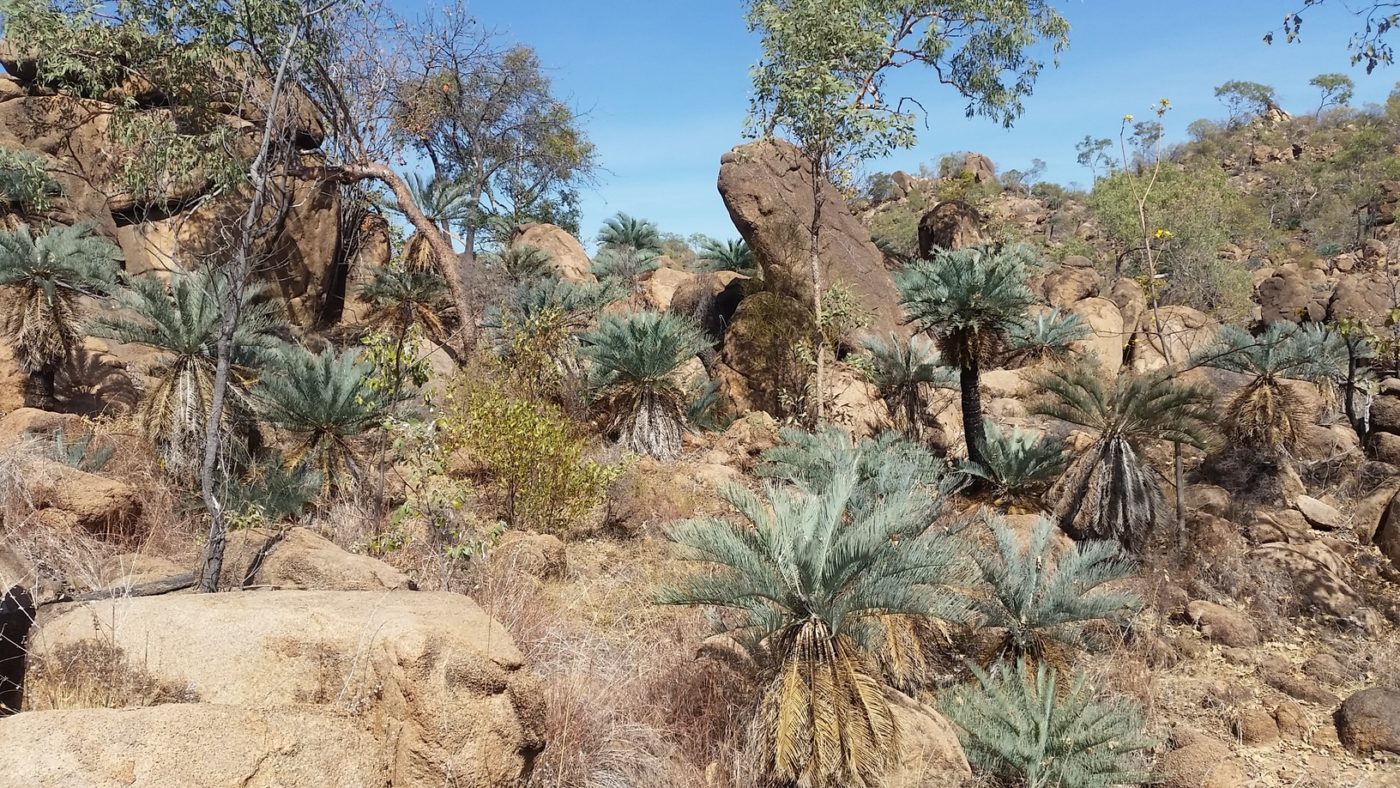
Cycas cairnsiana in its natural rocky habitat, on Mount Surprise. Picture courtesy of Yvonne and Bret Dalziel, 2015


Source of data : https://www.eldersweather.com.au/climate-history/qld/mount-surprise visited 04/02/2021
On this diagram, we can note that, globally, temperatures are high year round : they never go under 10°C and most of the year, day temperature reach temperatures close or above 30°C. This climate is very tropical and far from a mediterranean or temperate one. Under a European climate, these temperature conditions are rarely matched more than 3 months in a year, that’s one of the main reason why Australian Cycas are very slow here.
Another aspect to consider is rain : the hottest months are the wettest ones whereas the cooler ones are usually dry, which is an aspect we must consider in cultivation. Annual rainfall is around 800mm which is fairly dry but not desertic (for comparison Montpellier receives 750mm and Marseille 600mm).
It should be noted that in Europe, the rainfall curve is reversed : the coldest months are the wettest while the hottest ones are the driest, which also impacts cultivation.
The Cycas originating in the Northern Territory are considered the most difficult to grow. Even in subtropical climates like the Sunshine Coast (Queensland) they are very tricky excepted for Cycas angulata that grows very well here, according to Bret Dalziel, an expert on Australian Cycads. This can also be explained by climatic peculiarities. We can take the exemple of Katherine in the Northern Territory, where the beautiful Cycas calcicola grows :
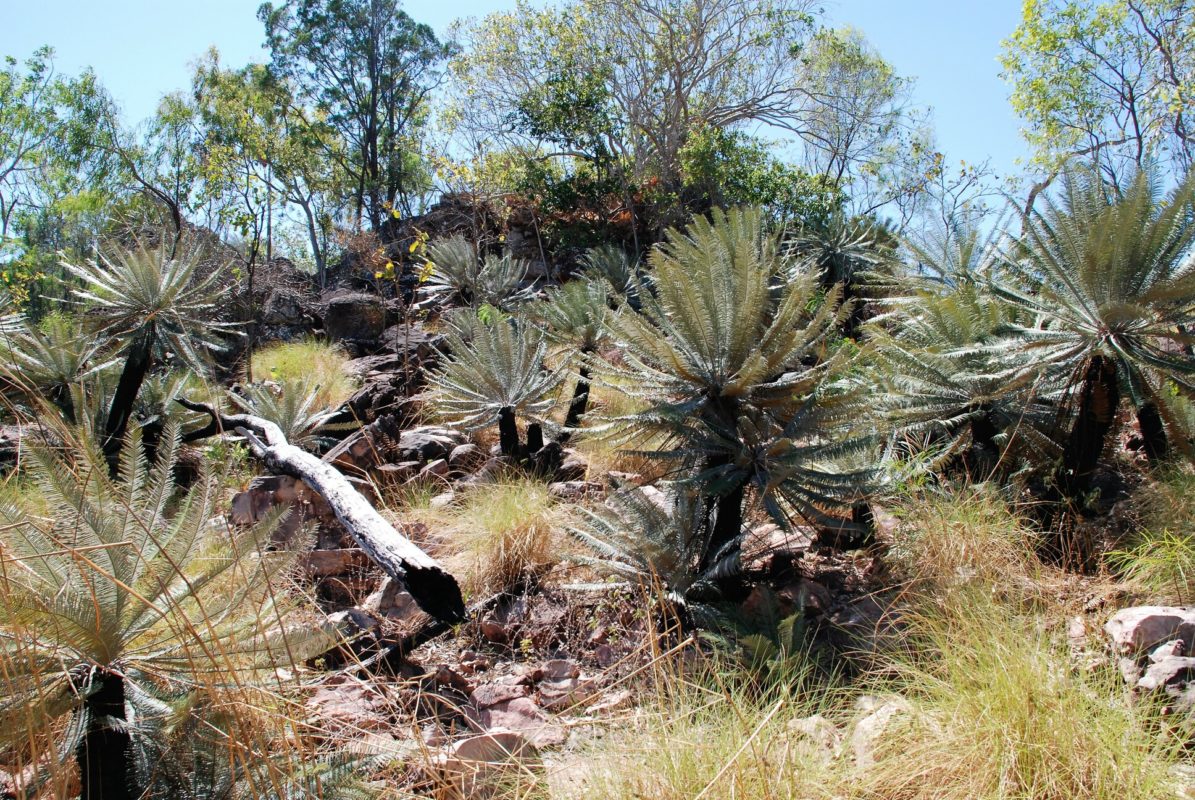
Cycas calcicola in habitat, in Litchfield National Park. Pictures courtesy of Yvonne and Bret Dalziel, 2015
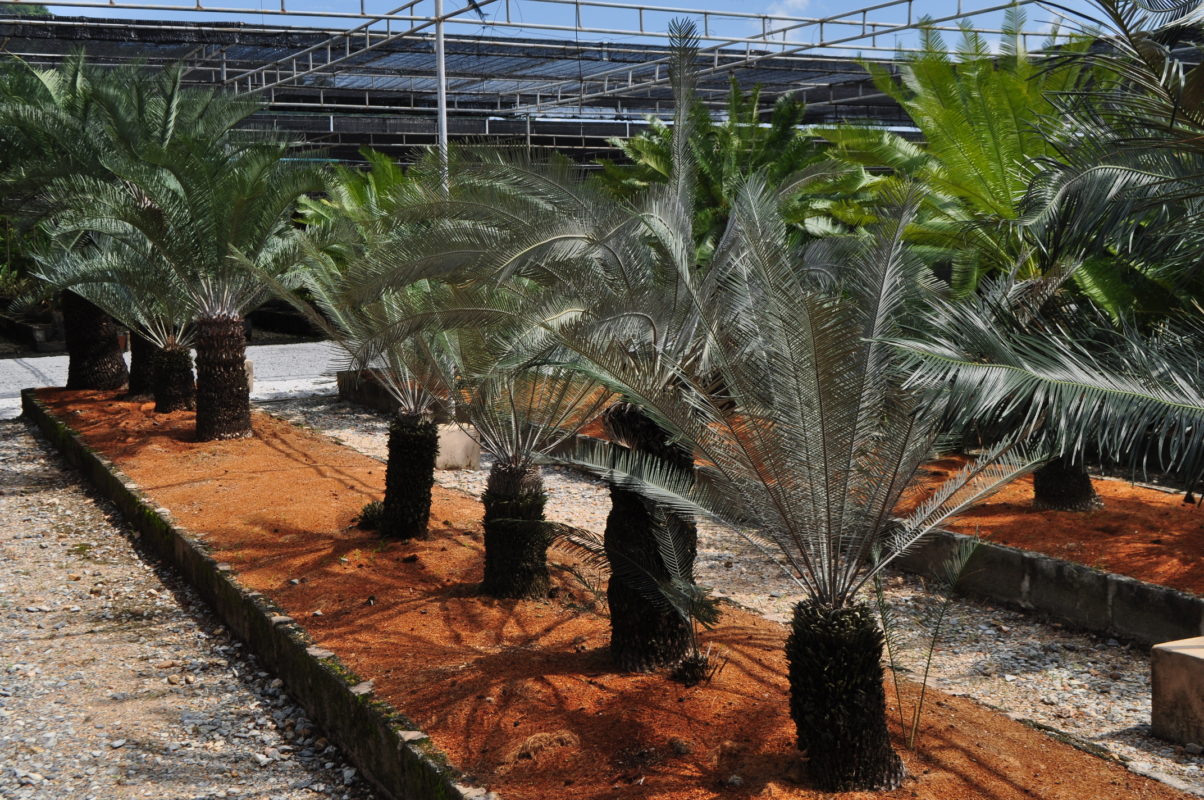
Cycas calcicola in cultivation in Nong Nooch Tropical Garden, Simon Lavaud, 2019
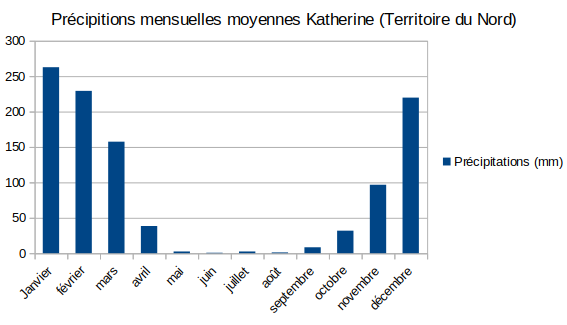

Source of data: https://www.eldersweather.com.au/climate-history/nt/katherine visited the 04/02/2021
What we should note about the locality where Cycas calcicola grows, is that even if night temperatures can be relatively low, around 15°C, the day temperatures are high year round and almost never under 30°C. So here we have a very hot climate that seems to be one of the keys to succeed in the cultivation these plants. It should also be noted that, like on Mount Surprise, the coldest months are the driest ones. Annual rainfall exceeds 1000mm which is relatively high, for exemple Brest (Britanny) receives 1100mm and is considered fairly humid.
An interesting fact is that in Nong Nooch Botanical Garden, in Sattahip, Thailand, Australian Cycas thrive, including those from Northern Territory. According to Bret Dalziel, they grow even better than in Darwin that is in Northern Territory ! This can be explained by Sattahip climate that is almost constant year round with temperatures oscillating between 25 and 30°C and a relatively short dry season (november-february).
What can be concluded about the secret for the best growth results of these plants lies in a complete absence of cold and a lot of water.

Notes about the soil :
Australian Cycas don’t seem to be very selective in terms of soil as long as it’s well draining. For exemple , Cycas calcicola (litterally « who lives on limestone ») grows on limestone as well as on basalt. Cycas cairnsiana usually grows on very rocky soils while Cycas desolata grows on sandy soils. According to Bret Dalziel, species from Northern Territory like Cycas yorkiana tolerate temporary root submersion without problems and some Cycas grow close to temporary riverbeds which suggests episodes of submersion during the wet season.
What we should retain from that : These species usually grow on well draining soils but like to have a lot of water as long as it’s hot.
Basis of cultivation in Europe
After having approached climatic data, we can start looking at these plant’s cultivation.
Now we know, these plants need heat to thrive. Unfortunately, without a tropical greenhouse it will not be possible to get a growth similar to what’s achieved in Austrlaia or Thailand under our European climates… But we can still succeed in making them live and having an acceptable growth by optimizing everything that can be.
Growing medium :
As we saw earlier , these plants seem to be fairly tolerant in terms of substrate variety as long as it’s mosty mineral. In cultivation, they can be grown in 100 % mineral soil like pumice or other volcanic gravel. The advantage of these growing media is that they dry quickly and drain very well, which avoids overwatering during autumn and spring, when it’s cool but plants are still being watered. The drawback of these media is that they need more regular watering than more organic ones during the warm season. Since you cannot « de-water » an overwatered plant, these mineral growing media seem to be the best solution.
Growing environment :
The growing season of these plants being very short in Europe, needless to say that a greenhouse (even unheated) is a big plus. The greenhouse allows to extend this growing season and will even be essential in the northernmost regions to obtain a minimum of growth. The more often temperatures will be around 30°C, the better the growth.
Knowing the habitat of Australian Cycas, it’s obvious that they need a very strong light intensity, so they should be given full sun or the brightest place of the greenhouse (note : if you bring your plants back indoors or in a greenhouse for winter, remember to acclimate the plant back to the sun when you take it out in spring to avoid burning the leaves)
Watering :
One must remember that Australian Cycas are not desert plants. Even though their climate is quite extreme, they receive a large amount of water over a relatively short period. This water is essential to get them to grow. And as seen in the climate part, we can’t really count on summer rains here as they’re rare or even absent depending of where we’re located in Europe !
So, if temperatures are around 18-20°C during the night and 30°C during the day, one can water generously and frequently. That’s when the plants will thrive the most.
When temperatures go under 20°C, watering should be reduced. If temperatures are under 10°C at night watering can even be stopped completely. When an Australian Cycas is watered when it is cold, it becomes exposed to a high risk of root rot. Here at the nursery, since the greenhouses are only kept frost free, I stop watering between November until March/April. Plants tolerate it very well but young ones can enter dormancy (they lose their leaves), it obviously reduces growth but it is still preferable to a dead plant.
If your climate is mild enough to keep these plants outdoors, they’ll need to be protected from excess water during winter rains.
Fertilization :
There is very little background on cycads fertilization. Fertilizers that are supposedly specific to Cycads have never been tested in a scientific manner by comparing them to commercial universal formulations, thus the sellers claims about these fertilizers being superiors and be considered deceitful, unless they can bring a scientific proof of it (which never happened until now).
Cycads seem to respond well to Osmocote and liquid fertilizer or a combination of both.
It’s essential to make sure that the plants are well fed enough during the growth season. If a slow release fertilizer is used, it can be coupled to a light liquid one applied regularly throughout the season.
Warning, if you’re using liquid fertilizer only, applications must be done very regularly because the soils we’re using are usually very poor and don’t retain anything.
Classification of the various species according to difficulty :
Here I have tried to establish a basic classification of the different species (not exhaustive) according to their level of difficulty, they’re divided in 3 groups : medium, difficult, very difficult
Medium :
Cycas media
Cycas megacarpa
Cycas ophiolitica (tolerates cooler temperature than most australian Cycas)
Cycas silvestris
Difficult:
Cycas angulata
Cycas cairnsiana
Cycas couttsiana
Cycas cupida
Cycas desolata

Despite coming from Northern Territory, Cycas angulata appears to be an exception and easier to grow than its relative from the same region, here cultivated in Nong Nooch Tropical Garden. Simon Lavaud,2019.
Very difficult :
All Northern Territory species except C. angulata.
Cycas furfuracea
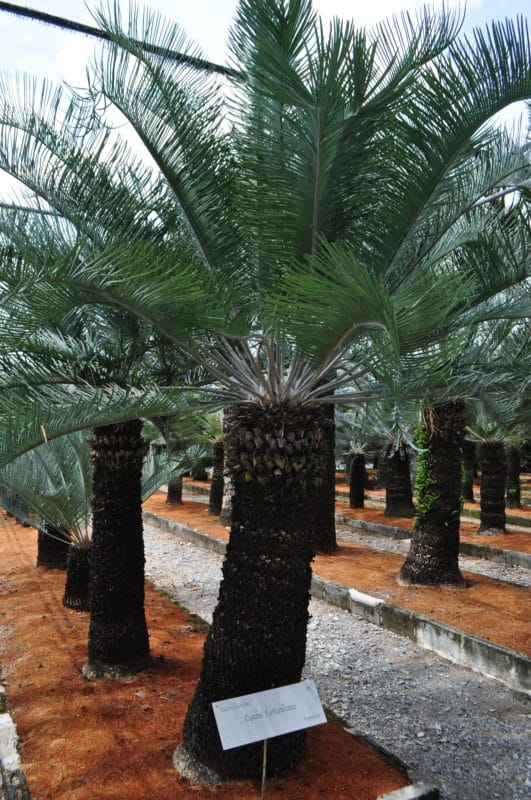
Cycas furfuracea is the westernmost species, present only in the Western Territory, it’s also incredibly rare in cultivation. Here a very healthy specimen in Nong Nooch Tropical Garden. Simon Lavaud, 2019

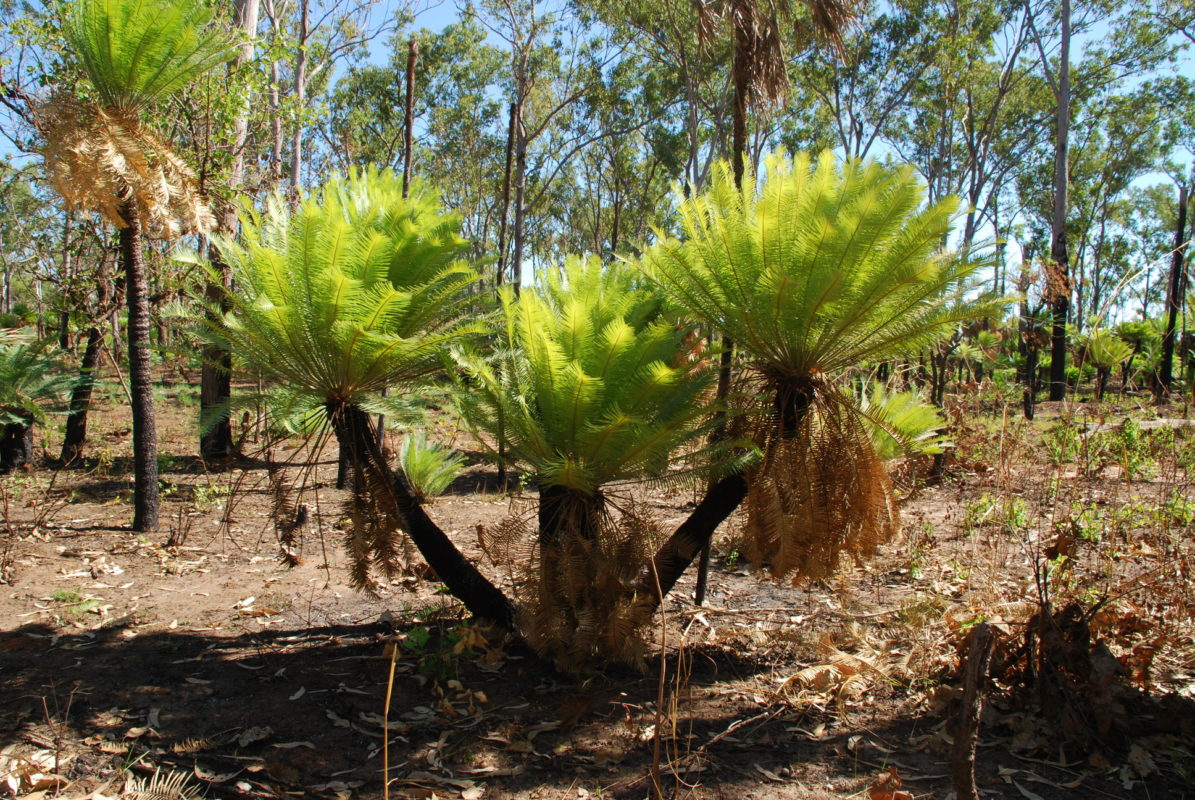
Cycas maconochiei is another beautiful species that is very difficult to grow out of a very specific climate. Here seen in habitat in the Northern Territory. Pictures courtesy of Yvonne and Bret Dalziel, 2017
Conclusion and discussion : I am giving here basis only on the cultivation of these species, they’re not exhaustive and largely perfectible. However they will prevent you from making some mistakes I have done at the cost of many dead plants ! If you have comments feel free to send me a message on the website or on Facebook.
Looking for a nice Australian blue Cycas seedling? Take a peak at the shop, I often have them in stock!
Simon Lavaud
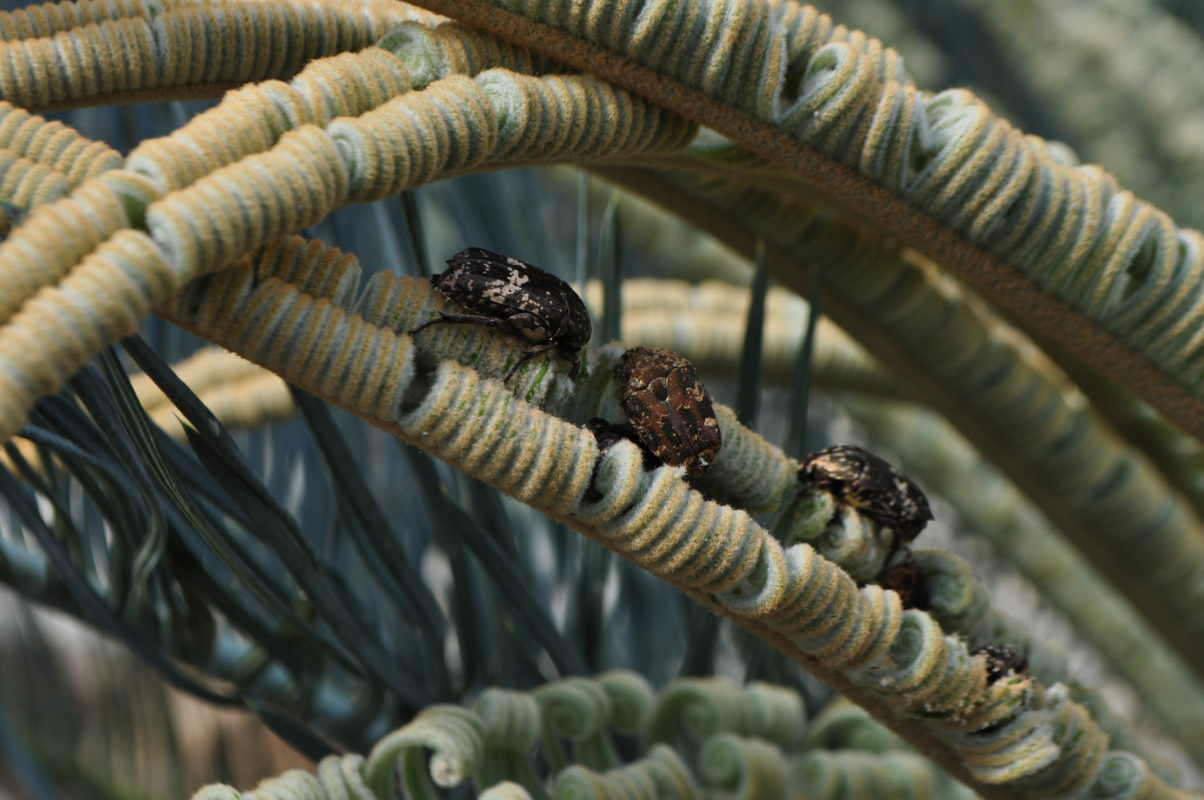
Beetles feeding on Cycas cairnsiana new leaves in Thailand. Simon Lavaud, 2019
(Download the PDF version by clicking on the logo below, share it with everyone !)

